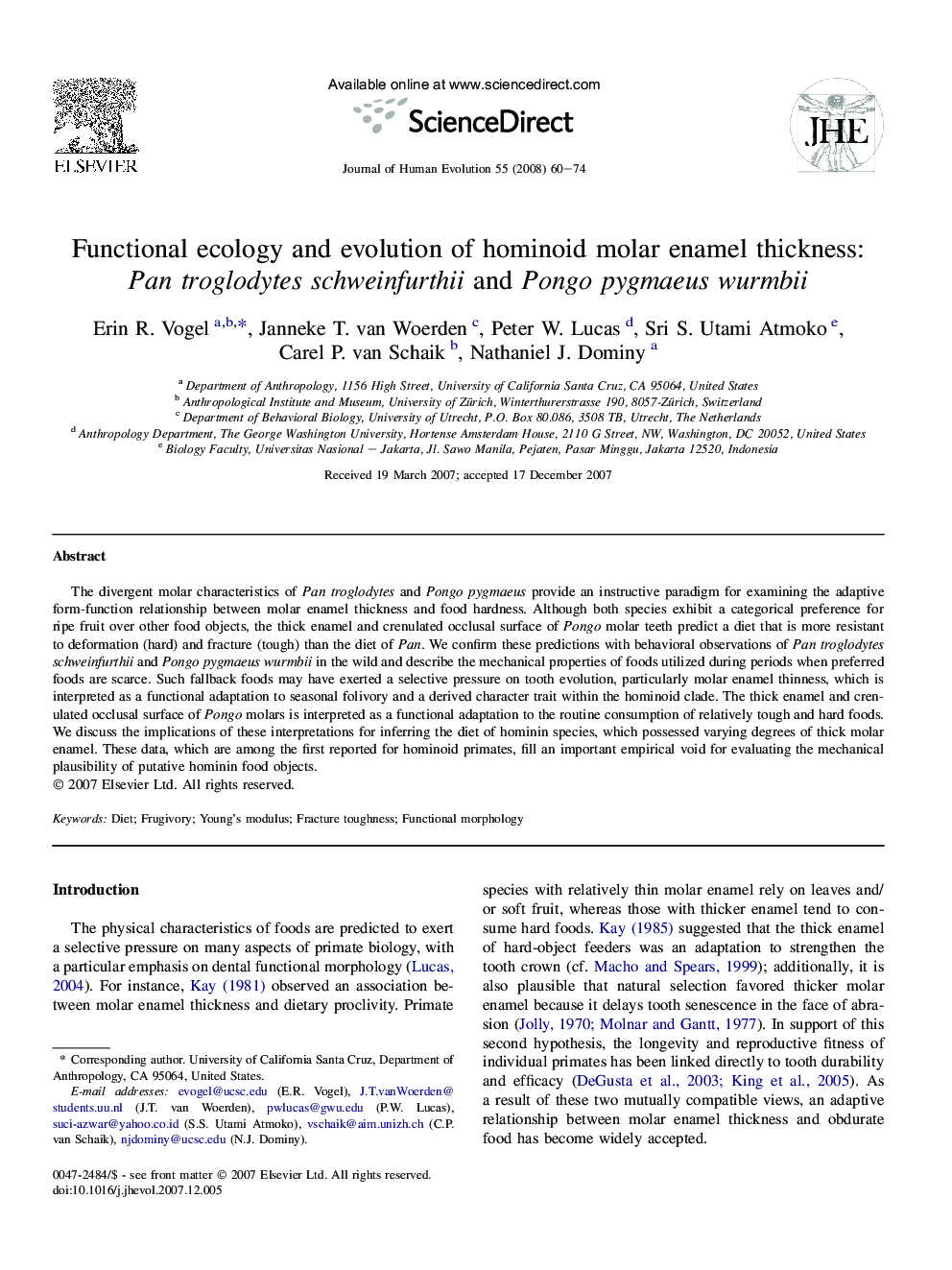| Article ID | Journal | Published Year | Pages | File Type |
|---|---|---|---|---|
| 4557337 | Journal of Human Evolution | 2008 | 15 Pages |
The divergent molar characteristics of Pan troglodytes and Pongo pygmaeus provide an instructive paradigm for examining the adaptive form-function relationship between molar enamel thickness and food hardness. Although both species exhibit a categorical preference for ripe fruit over other food objects, the thick enamel and crenulated occlusal surface of Pongo molar teeth predict a diet that is more resistant to deformation (hard) and fracture (tough) than the diet of Pan. We confirm these predictions with behavioral observations of Pan troglodytes schweinfurthii and Pongo pygmaeus wurmbii in the wild and describe the mechanical properties of foods utilized during periods when preferred foods are scarce. Such fallback foods may have exerted a selective pressure on tooth evolution, particularly molar enamel thinness, which is interpreted as a functional adaptation to seasonal folivory and a derived character trait within the hominoid clade. The thick enamel and crenulated occlusal surface of Pongo molars is interpreted as a functional adaptation to the routine consumption of relatively tough and hard foods. We discuss the implications of these interpretations for inferring the diet of hominin species, which possessed varying degrees of thick molar enamel. These data, which are among the first reported for hominoid primates, fill an important empirical void for evaluating the mechanical plausibility of putative hominin food objects.
